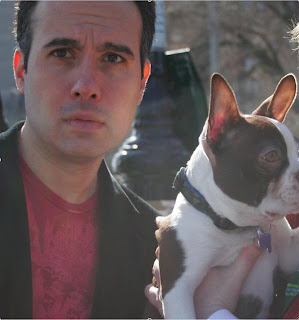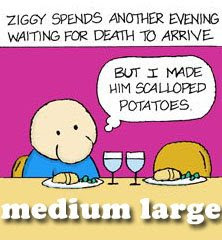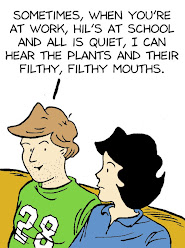Second, I want to share with you one of the most quietly haunting yet critically lionized films of the later half of the 20th century. A celluloid masterpiece that left the Cahiers du cinéma practically grasping for superlatives, as if vocabulary itself had proven an insufficient instrument for emotional and intellectual expression. An exemplar of the art of motion pictures that disrupted expectations, disquieted viewers and displayed a genius that years later Pauline Kael said proved once and for all that "rather than ask the deaf cosmos 'What's the meaning of life?' we should instead inquire of ourselves 'What does it mean to feel truly alive?'" A film titled:

Since the endless merits of Gumby on the Moon (click here to watch) have caused the very shelves of Film Comment to groan under the sheer weight of published praise, it is probably best we focus on the movie's most celebrated achievements:
* No other film has ever been so frighteningly unequivocal in it's simple yet brutal philosophy--the point of life is to keep living. Watch as rather than question how he came to be on the moon, Gumby quickly--almost instinctively--takes to the sole task of surviving on its surfacing, eluding the seemingly unmotivated yet all too menacing and deliberate pylons. In fact, the very battle of wits between our hero and his attackers makes us question if our enemies are the results of our actions or does our very existence begat combatants. In short, are we as individuals in control of anything outside of our desire to see yet another day?
* Around the same time Jean-Luc Godard and Luis Buñuel reveled in what they perceived as the very foundation of humanity--misanthropy--master filmmaker and Gumby creator Art Clokey no doubt realized that while our sole drive and purpose was survival, he by no means considered it a selfish impulse (after all, we all must help the one, for in their endurance we all continue). Note how although abandoned, Gumby is never truly alone but rather under the watchful eye of an attentive, altruistic being--in this case, his father. Now whether we are to take Clokey's notion of "father" literally or as a none-too-subtle allusion to a more heavenly "Father" has long been debated in the halls of film academia and so will almost certainly not be resolved here today. But that very scenario does allow for one of the most oft-quoted and debated lines in movie history--"Yep, he's on the moon all right. I've got to go after him."
* While most film scores try to fill your senses in the hopes of conjuring reality and reaction, the soundtrack to Gumby on the Moon actually seems to create space, allowing for a distance that consequently makes you feel that much closer to the protagonist. This very aural space also permits the viewer to recall their own desires for absolute silence and solitude. As humans we all long for seclusion from time to time but fear that what may at first be an occasion for personal reflection could lead to an extended period of social regression. How much time do we truly require alone? How regularly do we need the company of others? If we often find that we are alone does that mean we are lonely? If we often find ourselves with others does that mean we do not effectively exist as one? These are the questions the score allows us to ponder, with no pat answer ever provided.
* In the world of Gumby reality is the fiction we compose with the tools most immediate to us. Note how the moon is clearly not the moon but rather a model hung by string over a table. Still, as far as the protagonist is concerned is it not just as desolate and true as our own lunar companion? In a sense the movie's art direction is a statement on the act of art direction itself, boiled down to a filmic de glace for a rich, potent minimalist approach that makes the set of Dogville look like Cleopatra.
* The dad's fur astronaut coat is simply to die for.
Well, that is all for today. I hope you found this discussion both enlightening and edifying. Please join me next time when I discuss the conceptual and artistic triumph that is Catch That Pigeon: The Pilot Episode.







2 comments:
THANK YOU, already.
Never mind you, when is Ted going to update his Twitter blog? The bleeding in his mouth must have stopped by now, and even with his teeth missing he can still type.
Josh
Post a Comment